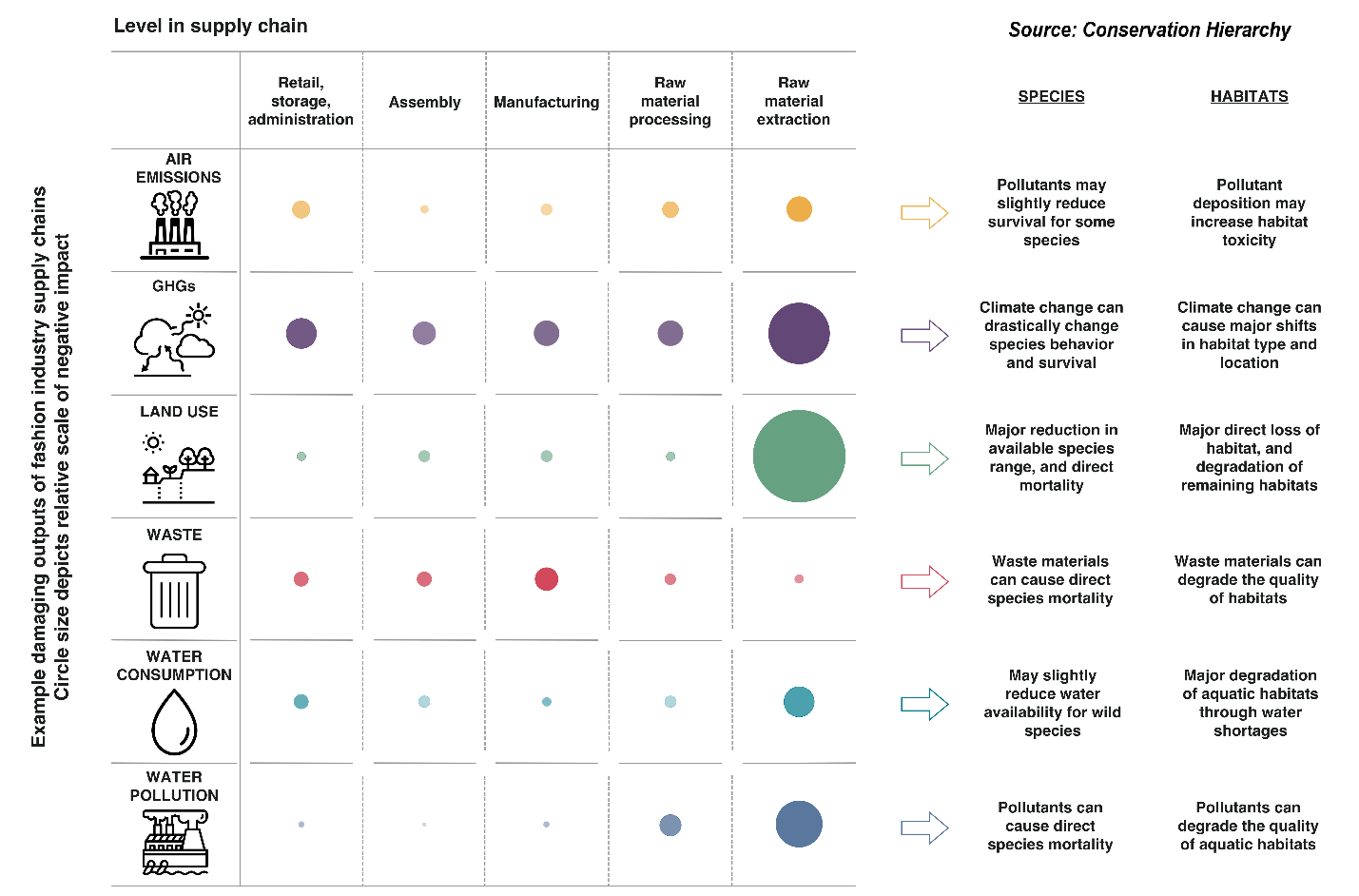
Sustainability is always in style: Biodiversity and the fashion industry
Interest in sustainability is rising in the fashion industry. Most consumers and brands, however, have been focused on the industry’s impact on climate change. Less known to the public is fashion’s high costs for biodiversity.
A 2020 analysis by McKinsey & Company outlined the negative impacts from three value chain stages: production, processing and end of life.
Production: Accessing the raw materials of fashion can contribute to biodiversity loss. Cotton accounts for about a third of fibres found in clothing. Growing it requires huge amounts of water and can lead to soil degradation and habitat loss. Synthetic fibres like polyester come from fossil fuel mining and contain microplastics that eventually wind up in the ocean and other ecosystems.
Processing: Textile dyeing and other materials treatments required large amounts of water, which can put a strain on freshwater sources. These processes can also pollute waterways with chemical runoff and nonbiodegradable waste.
End of life: Disposal of apparel can also contribute to biodiversity loss, as textile waste ends up in landfills, where it may contribute to habitat loss. Synthetic or treated textiles can also release pollutants into the surrounding landscape.

In one effort to get on a sustainable path, over 200 fashion brands have joined The Fashion Pact, committing to transform their operations. Together with their suppliers and distributors, the companies vow to green their business to help stop global warming, restore biodiversity and protect the ocean.
The Fashion Pact and other initiatives like it are answering growing consumer demand for responsible fashion, but much more needs to be done for the industry to move from negative to positive impacts on nature. Here are some ways clothing companies and consumers can be part of the solution.
Tips for brands
- Understand impacts and dependencies. Understanding how your business both depends on and affects biodiversity is the first step to developing strategies for sustainable operation. Tools like Natural Capital Protocol can guide apparel businesses to identify, value and measure their impact and reliance on natural capital.
- Invest in regenerative agriculture. Regenerative agricultural practices reduce water and chemical usage. Engage responsible suppliers with established and verified sustainability standards.
- Take a bold stance on zero waste. One of the biggest ways the fashion sector can help sustain biodiversity is limiting overproduction. According to McKinsey, manufacturers produce on average about 20 percent more than they need. Some 25 percent of this textile waste ends up in landfills or gets incinerated without ever being worn.
- Educate customers. Create information campaigns and incentivize consumers to make sustainable choices. Brands can also teach customers how to care for their clothing to make it last longer.

Tips for consumers
- Buy better and buy less. Shrink your fashion footprint by prolonging the use of the clothing you have. Choose items you really love and will be happy to keep in your wardrobe a long time.
- Be an investigative shopper. Find out about how clothing companies source and process raw materials. Ask brands to disclose what steps they are taking to address their impacts on biodiversity, and support those that have strong policies and practices in place.
- Shop second hand. Be a clothing hero by rescuing items that otherwise might end up in a landfill. As a bonus, many second-hand shops support important community programmes.
- Be mindful when doing laundry. Use cold water and water-efficient settings to minimize the amount of microfibres released during washing. You can also install fibre collection bags to catch microfibres before they leave your machine and enter the water system.
- Dispose with care. Before throwing them out, consider getting garments altered or repaired. Gift items in good condition to friends, family members or people in need, and look for responsible ways to recycle or discard items that are no longer usable.

Redirecting personal spending towards responsible fashion will make a significant contribution towards realizing the vision of living in harmony with nature. With more apparel brands starting to think seriously about sustainability, and consumers holding them accountable, we can ensure that the growing interest in sustainable fashion is more than just a passing fad.
| “Using a piece of clothing nine months longer can reduce its associated CO2 emissions by 27 percent, its water use by 33 percent, and its waste by 22 percent.” - McKinsey & Company |
|---|
More Information:
Business and Biodiversity